API documentationTable Of ContentsPrevious topicNext topicThis Page |
Languages¶This area enables Administrators to create custom translations for elements on the website such as buttons, commands, alerts and so on... 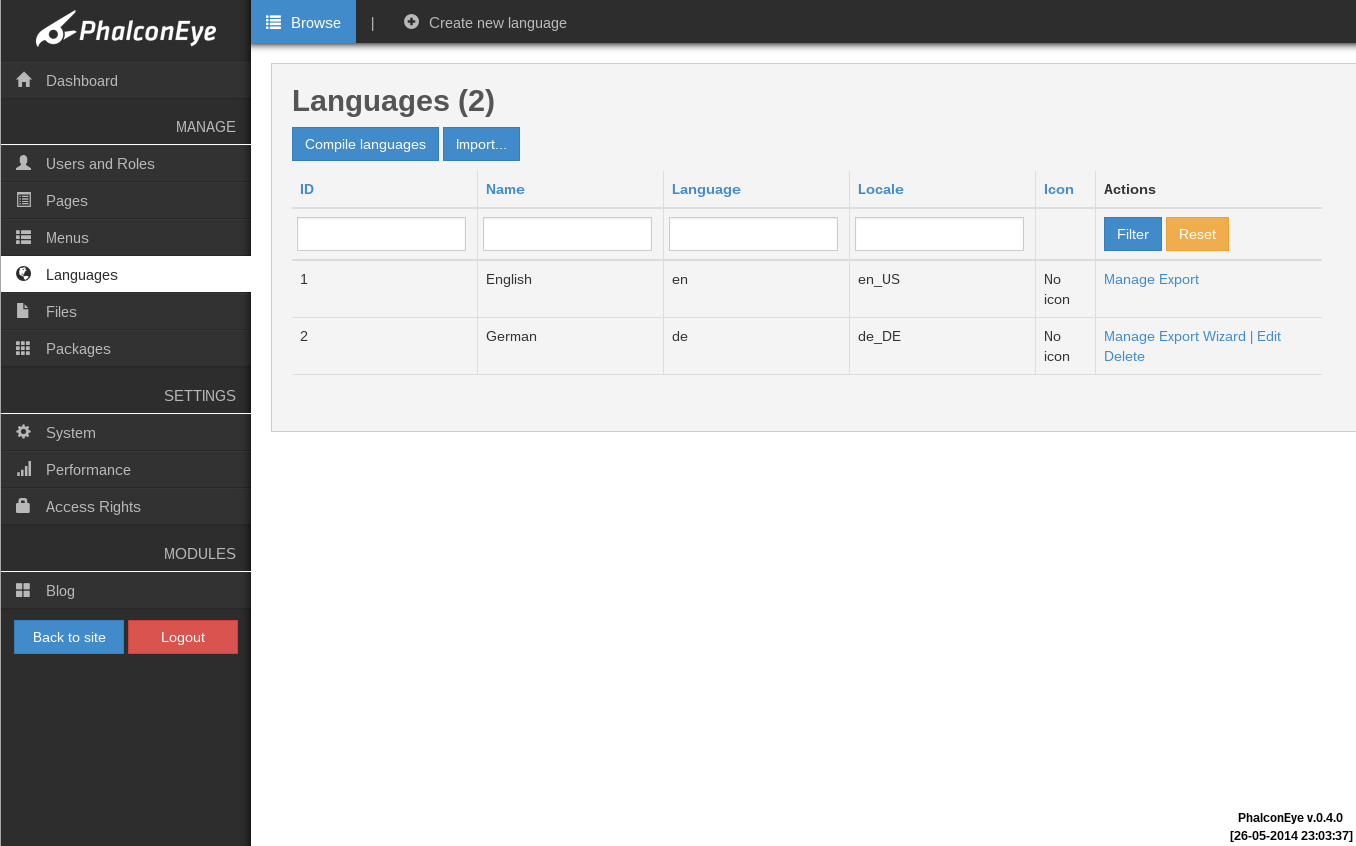
Adding a language¶To add a new language - click “Create new language” from top navigation. 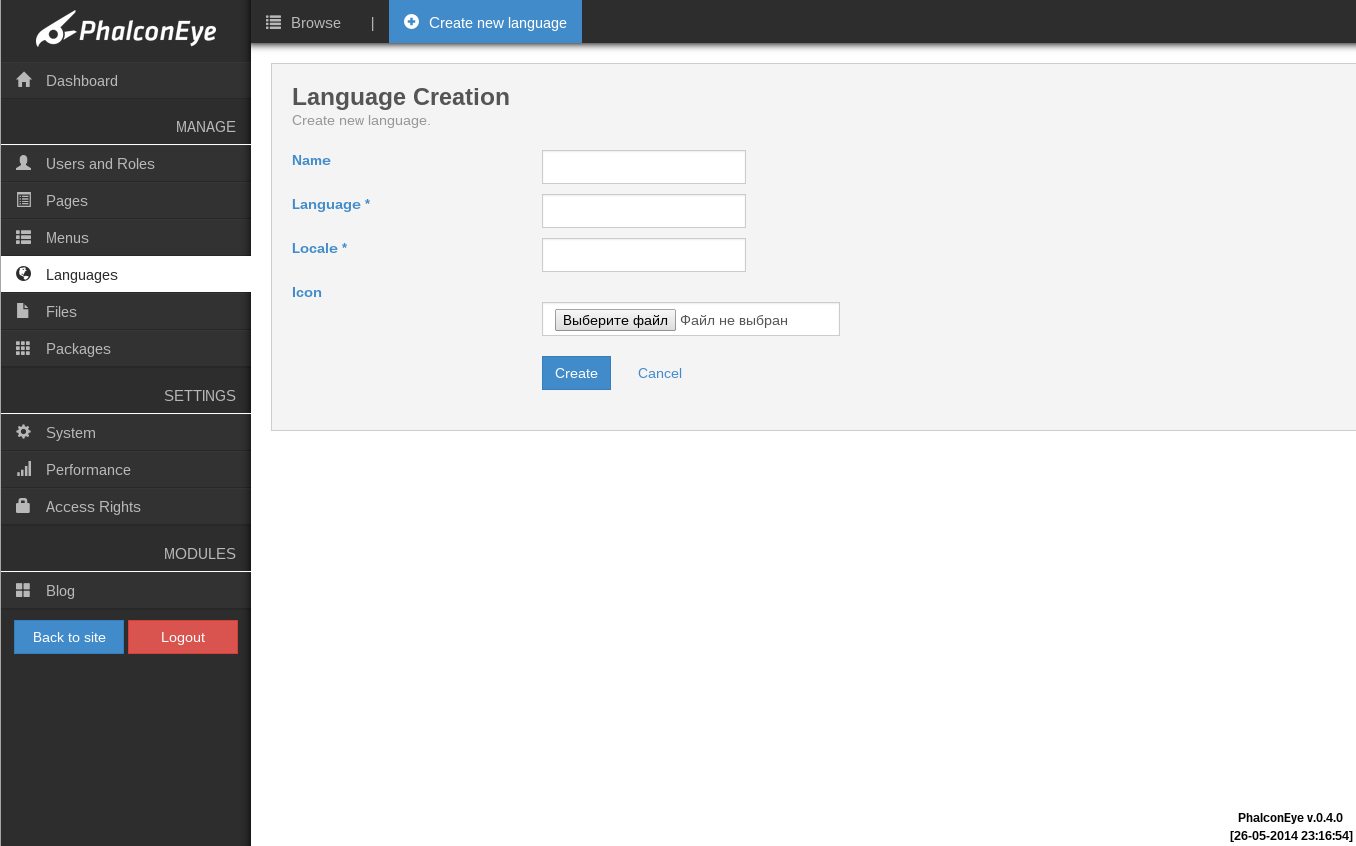
Fields description:
Performance note¶Custom translations are kept in database for simplicity of development. In production mode, however, translations are compiled into a php file to avoid database performance overhead. To re-compile available translations click “Compile languages” and wait until it completes. Export¶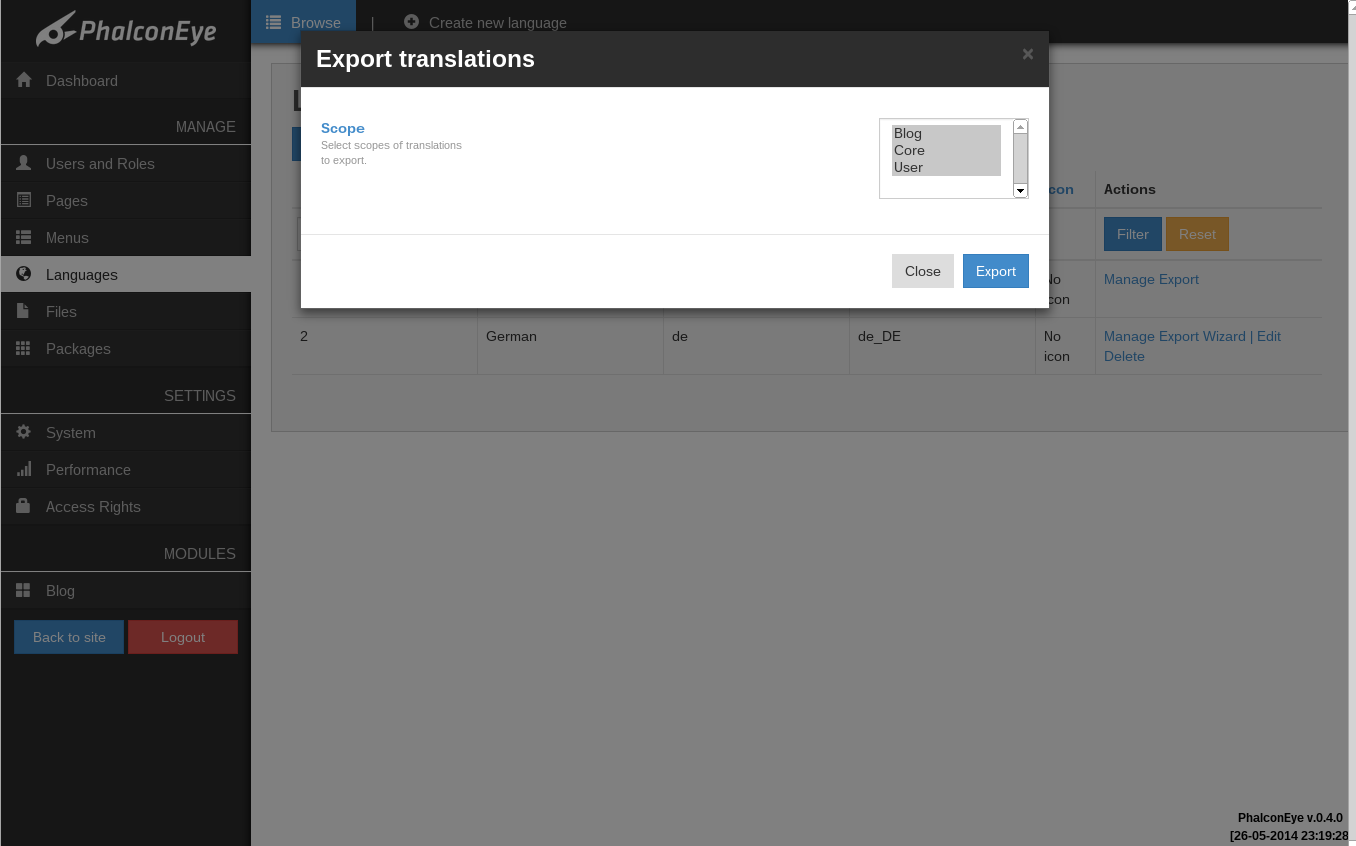
You can easily export a language you have created into a JSON file and import it into another instance of PhalconEye. Scope defines logical separation of the language to export only certain part of translations (e.g. Blog - only translations used in Blog module will be exported). Import¶Enables administrators to import translations for other languages. Simply, click “Import” and select a JSON file file with translations. After short period of time translations will be imported and you will see message about the result. Once finished, do not forget to compile them! Manage Translations¶You can manage translation by clicking “Manage” within a row. 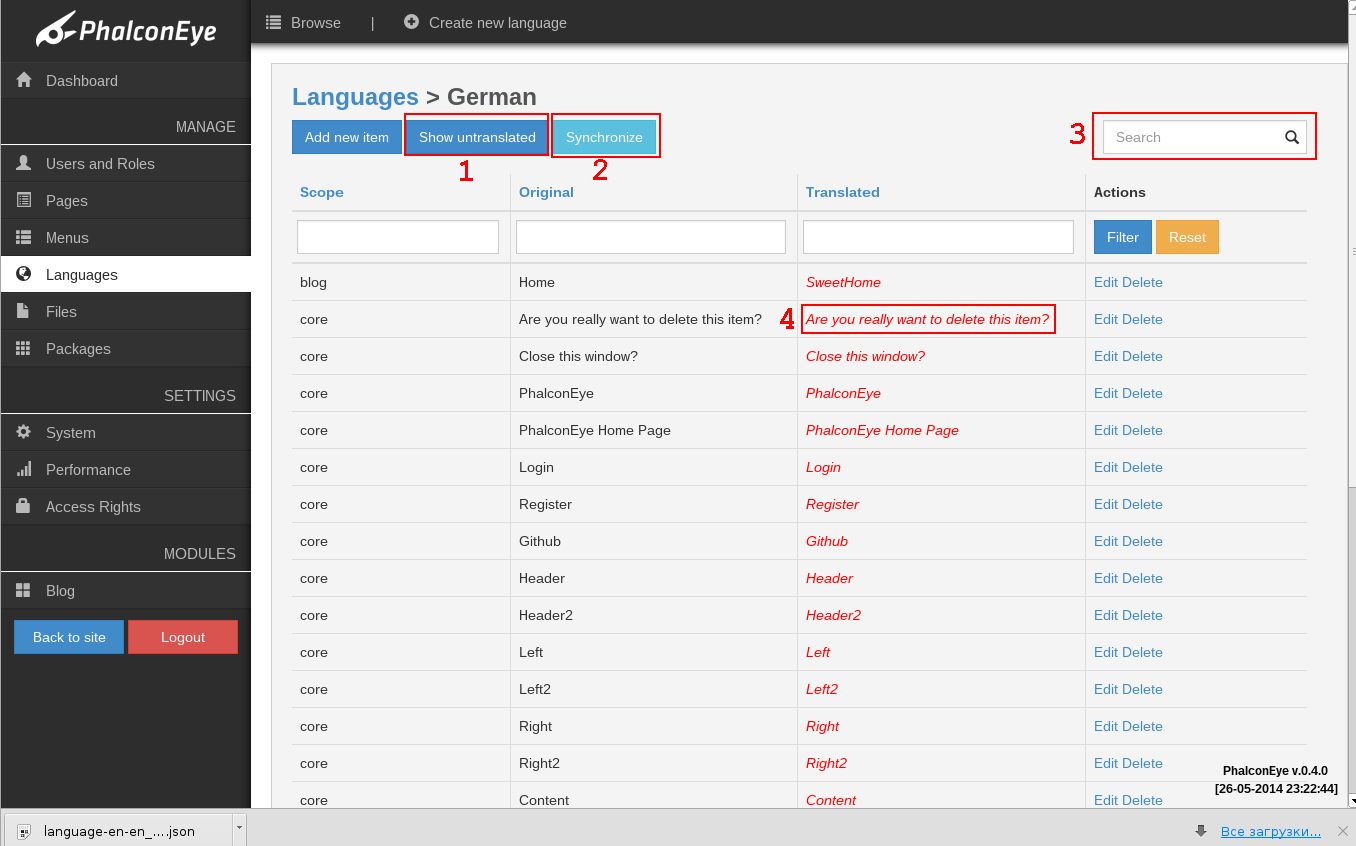
Wizard¶Spped up translations with wizard! It will give you the original text, translation and a suggestion. The suggestion is automated on en -> current_language by Yandex translation API. By clicking “Next” button you will save the translation field to database. 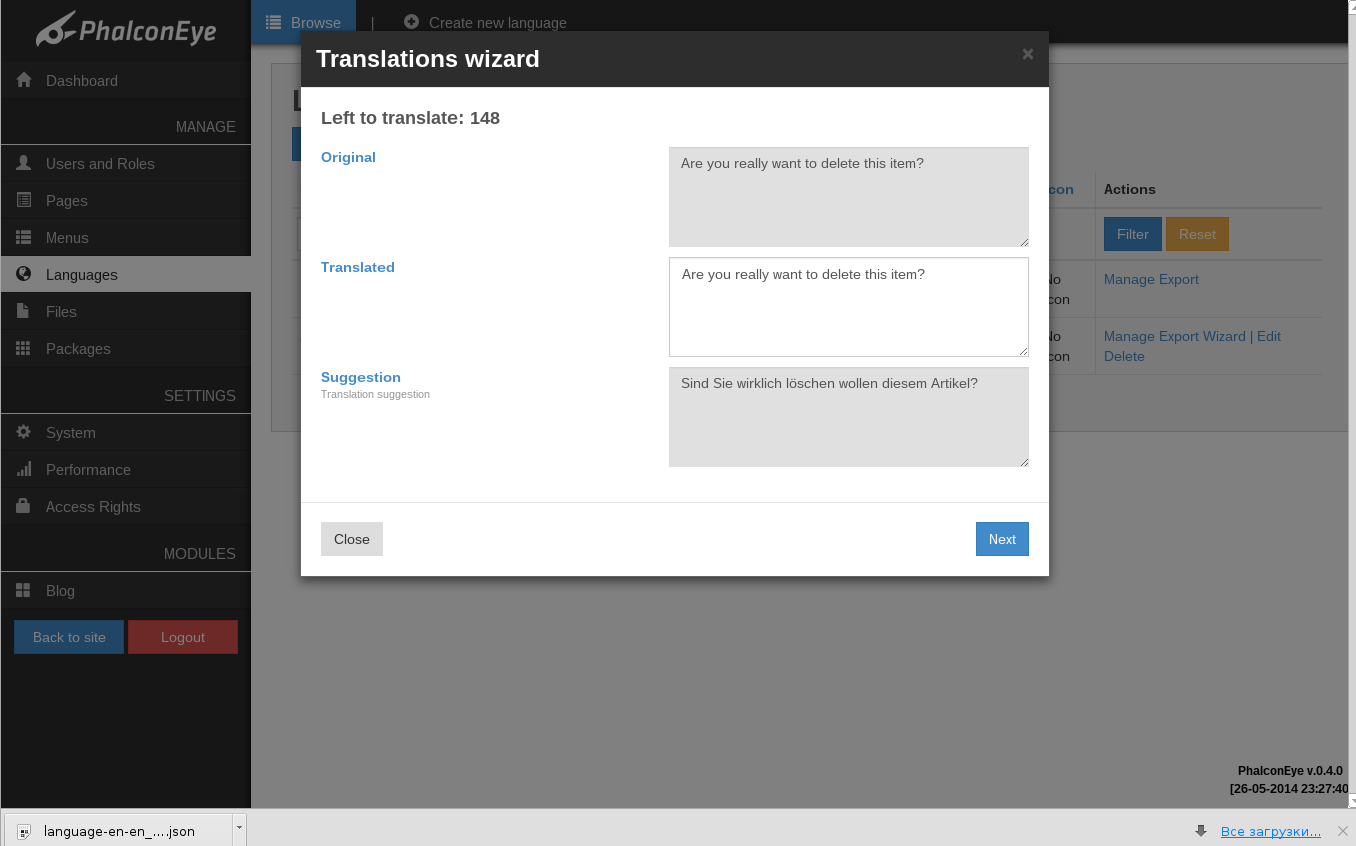
|